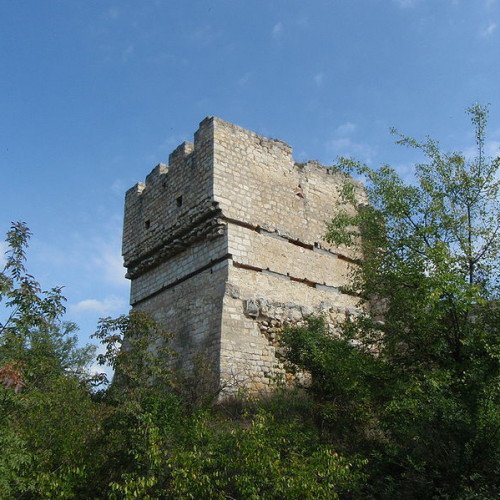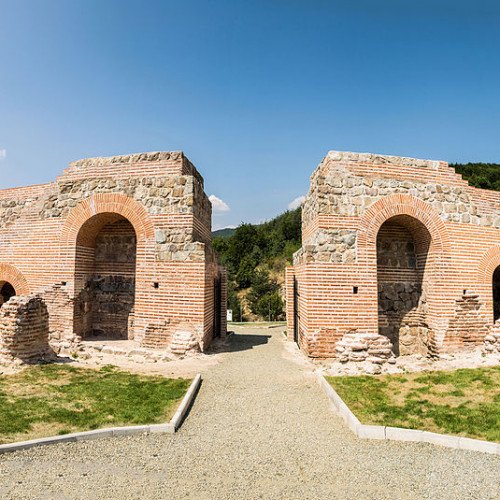Castles of "Bulgaria" CHERVEN (FORTRESS) vs GATE OF TRAJAN

CHERVEN (FORTRESS)
The stronghold of Cherven (Bulgarian: Червен, "red") was one of the Second Bulgarian Empire's primary military, administrative, economic and cultural centres between the 12th and the 14th century. The ruins of the fortress are located near the village of the same name 30 to 35 kilometres (19 to 22 mi) south of Rousse, northeastern Bulgaria. The town was a successor to an earlier Byzantine fortress of the 6th century, but the area has been inhabited since the arrival of the Thracians. Cherven was first mentioned in the 11th century in an Old Bulgarian apocryphal chronicle. It gained importance after 1235, when it became the seat of the medieval Bulgarian Orthodox Bishopric of Cherven. It was affected by the Mongol Golden Horde raids in 1242 and was briefly conquered by Byzantine troops during the reign of Tsar Ivailo (1278–1280). During the second half of the 14th century, the stronghold's area exceeded 1 square kilometre (0.39 sq mi) and had intensive urban development, including a fortified inner city on vast rock ground in one of the Cherni Lom river's bends, and an outer city at the foot of the rocks and on the neighbouring hills. The town had a complex fortification system and was completely built up. Cherven grew to become a centre of craftsmanship in the 14th century, with iron extraction, ironworking, goldsmithing, construction and arts being well developed. The town was an important junction of roads from the Danube to the country's interior, which also made the town a key centre of trade. Cherven was conquered by the Ottoman Turks in 1388 during the Bulgarian-Ottoman Wars, initially retaining its administrative functions but later declining in importance. The modern village of Cherven located close to the ruins of the fortress has, as of September 2005, 302 inhabitants.
Statistics for this Xoptio

GATE OF TRAJAN
The Gate of Trajan or Trajan's Gate (Bulgarian: Траянови врата, Trayanovi vrata) is a historic mountain pass near Ihtiman, Bulgaria. It was named so after Roman Emperor Trajan, on whose order a fortress by the name of Stipon was constructed on the hill over the pass, as a symbolic border between the provinces of Thrace and Macedonia. The pass is primarily known for the major medieval battle of 17 August 986, during which the forces of Byzantine Emperor Basil II were routed by Tsar Samuil of Bulgaria, effectively halting a Byzantine campaign in the Bulgarian lands. Today, a tunnel of Trakiya motorway similarly known as the Gate of Trajan Tunnel (тунел „Траянови врата“) is near the fortress, 55 kilometres (34 mi) from Sofia. The saddle Trajan Gate on Graham Land in Antarctica is named after the Gate of Trajan.